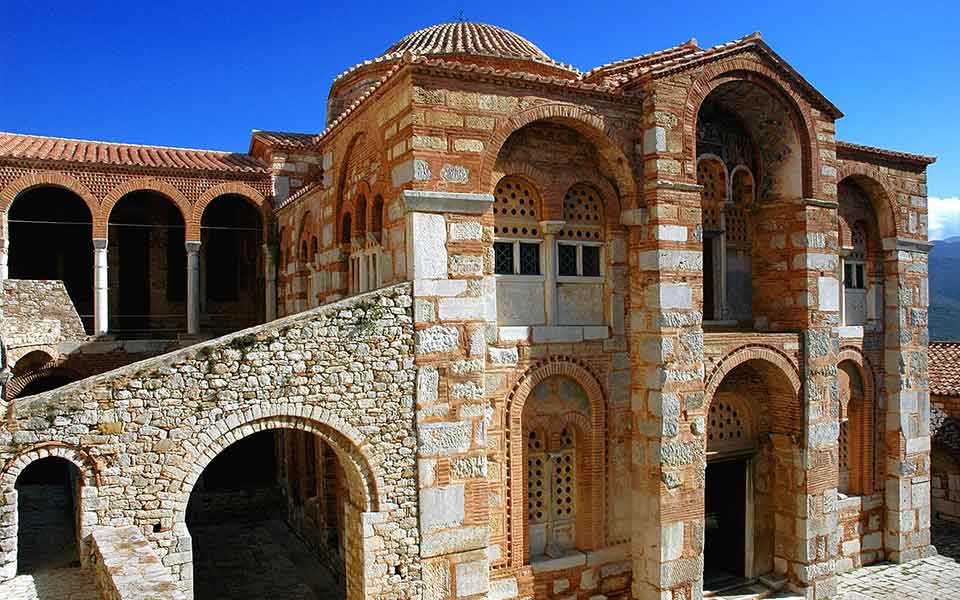It’s easy to overlook the region of Viotia (commonly spelled Boeotia) in Central Greece. Sandwiched between the more glamorous Attica to the south, and the wilds of Phocis and Thessaly to the north, visitors to the Greek mainland all too often bypass this legendary crossroads; home to the deadly Sphinx of Oedipus Rex-fame, the birthplace of the poet Hesiod (c. 8th-7th century BC), and the setting of numerous, epoch-defining battles – Plataea, 479 BC; Leuctra, 371 BC; Chaeronea, 338 BC, to name a few.
But for the completists among you, not to mention history and archaeology buffs, excluding Viotia from your travel itinerary would be a crying shame. Couched amid rolling hills and lush countryside, Viotia packs in more cultural sites per square inch than just about any other region in Greece, and that’s saying something.
Blessed with a number of truly outstanding museums – the regional museum in Thebes is, hands-down, one of the best in the country – ancient citadels, and beautifully preserved medieval churches, the jewel in Viotia’s crown is, without doubt, the 1,000-year-old monastery of Osios Loukas, a UNESCO World Heritage Site.
Located 120km northwest of Athens, near the scenic town of Distomo, the historic walled monastery is renowned for its Byzantine art and architecture, and is considered one of the most significant monastic complexes in the Greek Orthodox world.
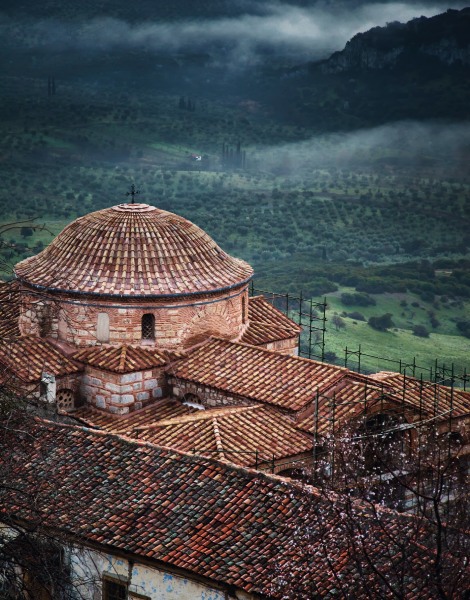
© Perikles Merakos
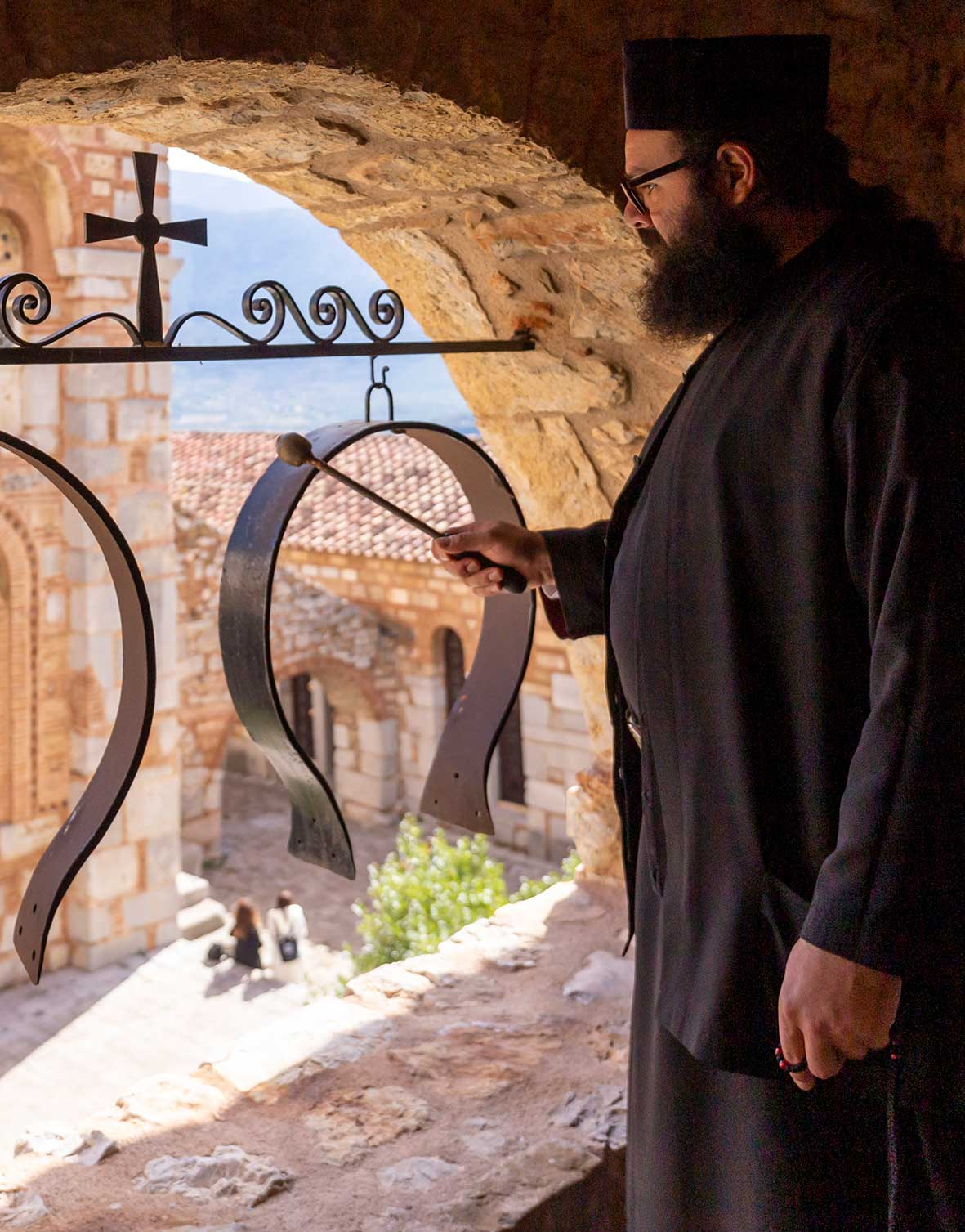
© Perikles Merakos
A Masterpiece of Byzantine Art
Founded in the mid-10th century by the hermit, Osios Loukas (the Venerable Luke) of Steiris, the monastery is Greece’s largest and best preserved monument from the Middle Byzantine period (843-1204 AD). Perched on the western slope of Mount Helicon, the complex, which is home to a small but active community of monks, consists of two main structures: the domed Katholikon (main church), beneath which is a large burial crypt, and the smaller Church of the Theotokos (“Mother of God”), the earliest known example of the characteristic four column, octagonal (cross-in-square) design in Greece. The ornate portico that connects the two churches houses the remains of the saint.
Immediately striking are the interiors of the churches, both adorned with spectacular mosaics and frescoes depicting scenes from the life of Christ, the Virgin Mary, and other religious iconography, dated to the first decades of the 11th century. It’s easy to see why these scenes served a didactic purpose when they were originally composed, conveying spiritual teachings and Biblical stories to the Faithful.
Scholars believe that the elaborate sculptures and other decorative features that adorn the church interiors, as well as the extraordinary level of craftsmanship, are an indication that artisans from Constantinople itself, the capital of the Byzantine empire, worked on the construction of the site.

© Public domain
Golden Mosaics
Of particular note are the Katholikon’s well preserved golden mosaics from the so-called “Macedonian Renaissance,” a high period of Byzantine culture that spanned the 9th-11th centuries. Among them is a beautifully composed narthex mosaic, depicting St. John, Archangels Gabriel and Michael, and the Virgin Mary. These intricate and vibrantly colored compositions are visually stunning, showcasing the mastery of artistic techniques and craftsmanship of the time, such as mosaic tessellation (tiling).
The three side chapels as well as the upper galleries of the Katholikon are decorated with remarkable wall-paintings (frescoes), dated to the mid-11th century, a few years after the composition of the mosaics.
In terms of architecture, the monastery complex represents the pinnacle of Middle Byzantine design. The Katholikon combines elements of both Byzantine and Romanesque traditions, incorporating a cruciform (cross-in-square) design with a large, 9m-diameter central dome, and an elaborately decorated facade of brick, stone, and marble (the “opus mixtum” technique). This distinctive blend of styles is what makes Osios Loukas such a unique monument, but its overall design became a model for all later Byzantine monuments of this architectural type in Greece.
In recognition of its importance, the Monastery of Osios Loukas was inscribed as a UNESCO World Heritage Site in 1990, along with two other Middle Byzantine-era monasteries: Daphni, in Attica, and Nea Moni, on Chios.
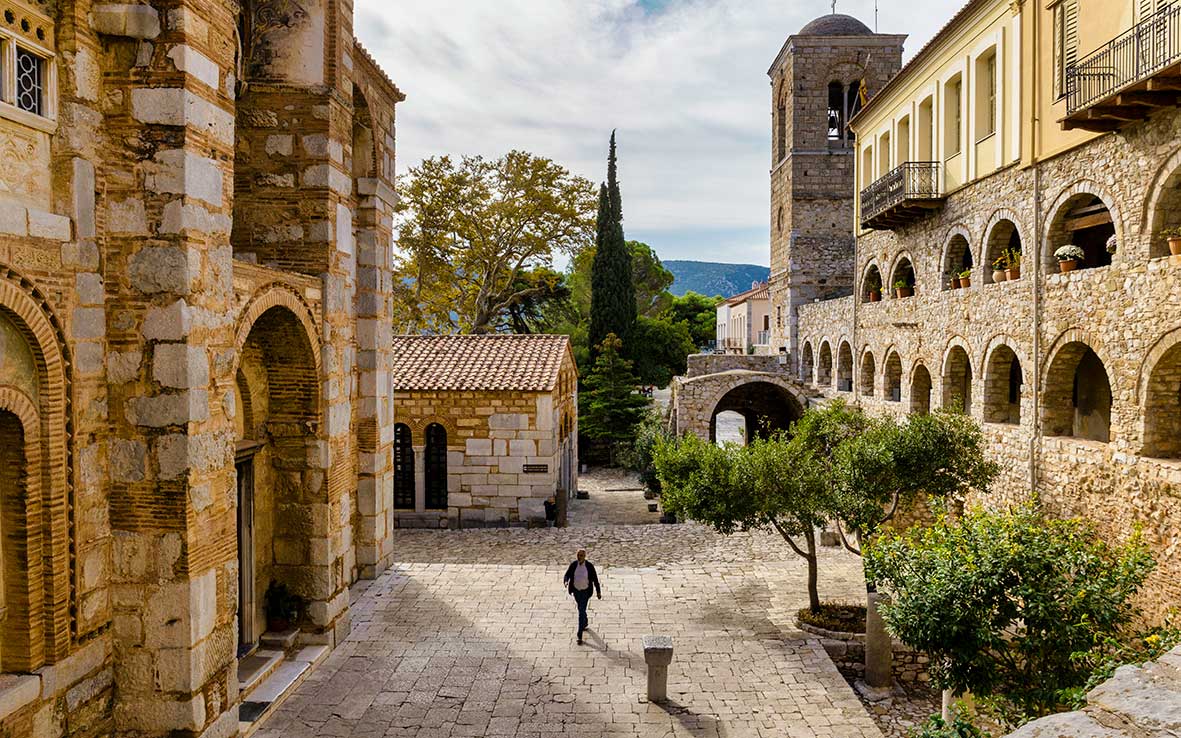
© Perikles Merakos
Underground Crypt
An important feature of the complex is the large burial crypt, built directly underneath the Katholikon, and accessible via a side stairwell. Dedicated to Aghia Varvara (St. Barbara) and dated to the first half of the 11th century, it contains three tombs, one of which, in the north wall, is the marble tomb of Osios Loukas, whose remains were moved in 1911 to the portico above. The crypt underwent extensive conservation work in the 1960s by the Greek Archaeological Service, during which time a series of spectacular wall frescoes were uncovered, preserved under centuries of dirt and candle soot.
Until the recent wildfires (August 2023), which threatened to engulf the entire complex, the monastery was surrounded by centuries-old olive groves and almond trees. In the courtyard in front of the main entrance, visitors could sit and enjoy a coffee whilst taking in the breath-taking scenery. There was also an on-site gift shop, selling local products, and a small museum housing a collection of Byzantine sculptures. Sadly, much of this area has now been destroyed, but the resident monks, with the support of the Ministry of Culture and other relevant authorities, are determined to repair the damaged buildings and restore the groves and gardens to their former glory.
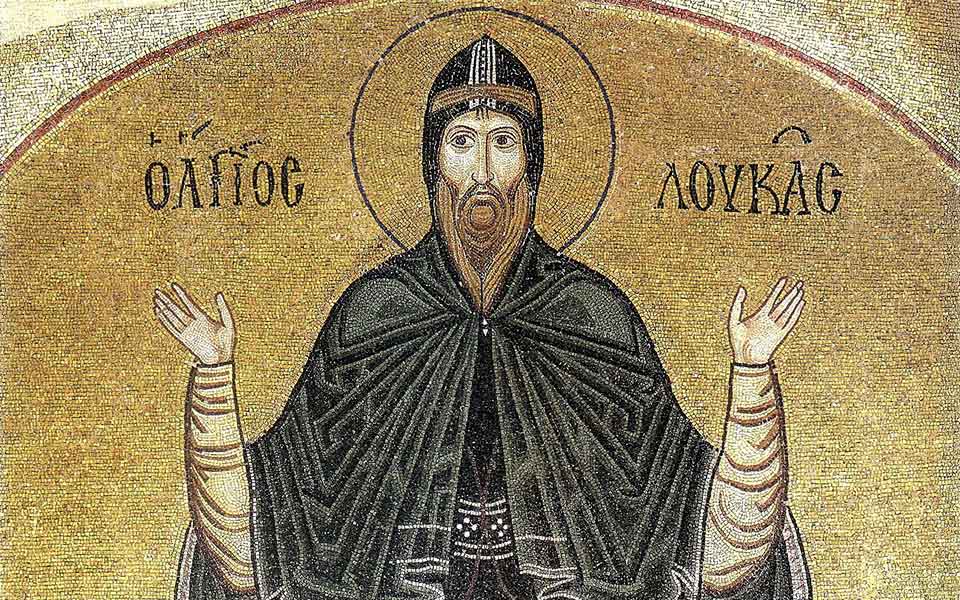
© Public domain
Who was Osios Loukas?
Osios Loukas (896-953 AD), often referred to as “Luke the Wonder-worker,” was a native of nearby Phocis, to the north. In an anonymously written account of his life, composed by a monk who had been one of his followers, Loukas came from a pious family of peasant farmers. He exhibited signs of closeness to God from a very early age, including levitating in prayer, and twice attempted to leave home to seek solitude and spiritual growth in the wilderness.
At 14, Loukas’ mother granted him permission to leave home. He ventured to Mount Ioannou in the Peloponnese, where he spent seven years as a hermit. His spiritual aestheticism soon gained fame, and a number of prophecies were ascribed to him during this period, including a dream that foretold the invasion of Byzantium by the Bulgarian emperor Simeon in 917 AD.
Loukas’s most famous prophecy was his dream that the Byzantine emperor, Romanos II, would liberate Crete from the Arabs after the hermit’s death. Following months of siege warfare, Romanos’ forces, under the command of Nicephorus Phocas, did indeed reconquer the island in 961 AD, eight years after Loukas’ death.
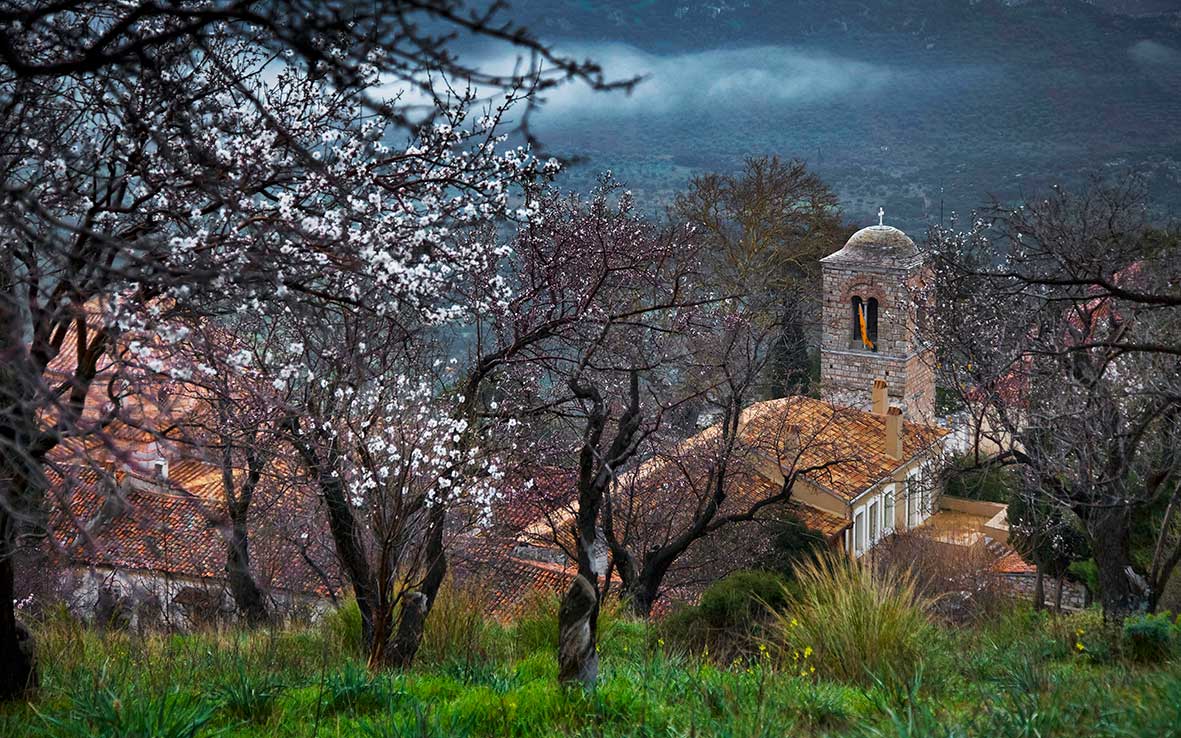
© Perikles Merakos
The Healing Saint
After many years in the Peloponnese, Loukas returned north, settling in the area of Steiris (“place of healing”) on the slopes of Mount Helicon, where he founded his hermitage, c. 946 AD. Renowned for his piety and his spiritual teachings, devotees soon flocked to the area, and a monastic community quickly took root.
As the community grew, a church was dedicated to Saint Barbara, an early Christian saint and martyr of the 3rd century.
Following his death in 953, the miraculous relics of Osios Loukas, whose feast day is commemorated on February 7th, were preserved and kept on display inside the monastery. His tomb soon became the focus of a healing cult, where visitors would sleep and pray for a miracle, a practice called incubation. As such, the site has been an important site of pilgrimage for Orthodox Christians for over a thousand years.

